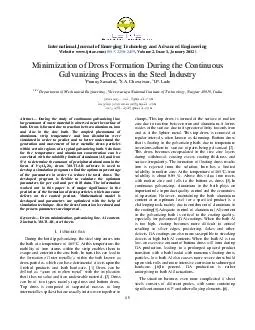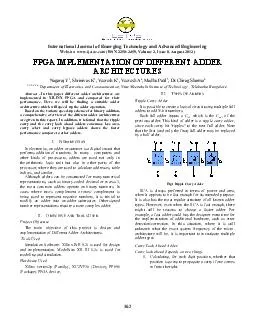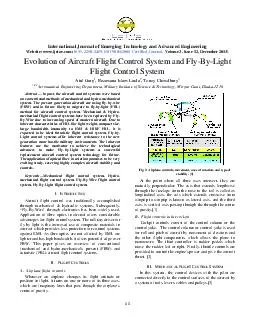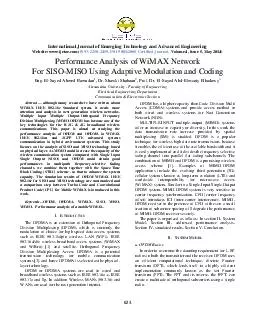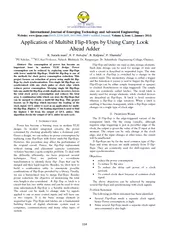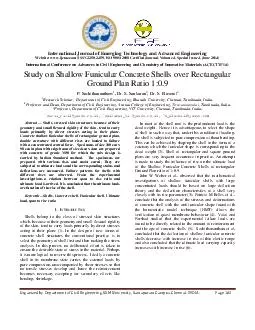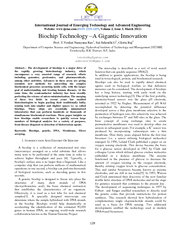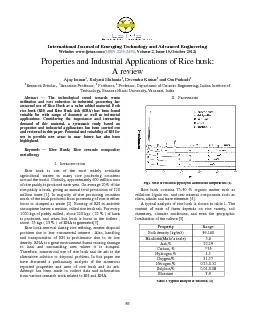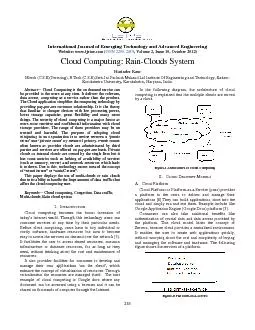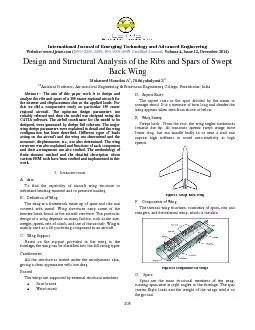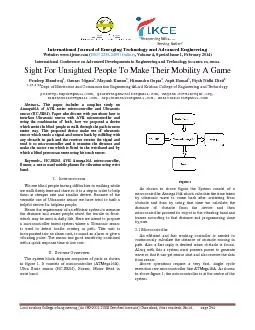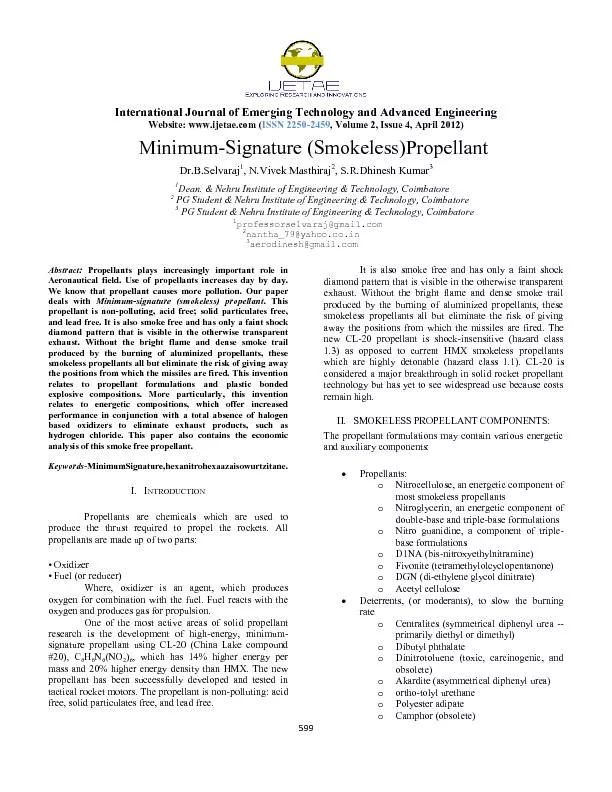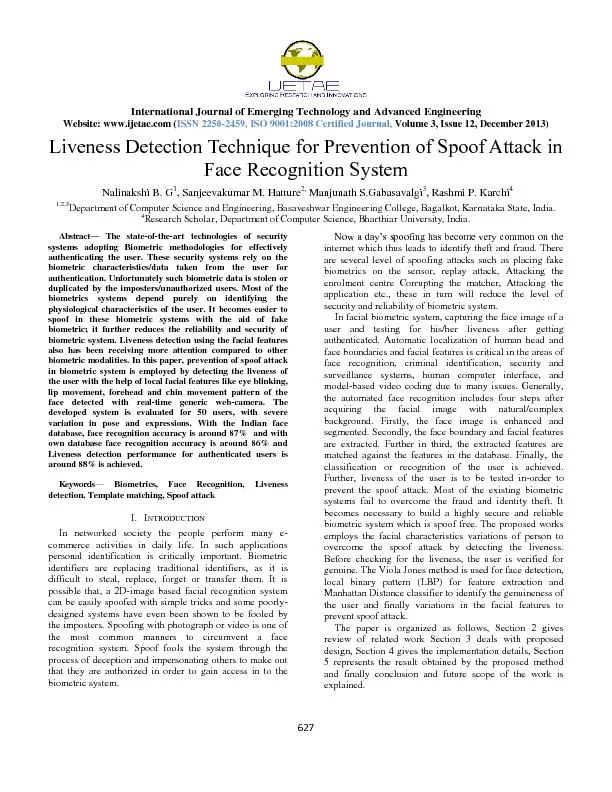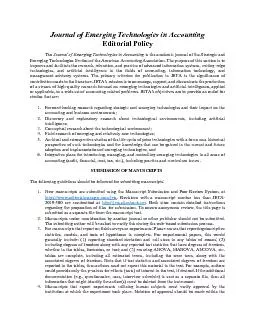PDF-International Journal of Emerging Technology and Advanced Engineering
Author : phoebe-click | Published Date : 2016-03-18
Website wwwije taecom ISSN 2250 2459 Volume 2 Issue 1 Janua ry 2012 45 Minimization o f Dross Formation During t he Continuous Galvanizing Process in t he Steel
Presentation Embed Code
Download Presentation
Download Presentation The PPT/PDF document "International Journal of Emerging Techno..." is the property of its rightful owner. Permission is granted to download and print the materials on this website for personal, non-commercial use only, and to display it on your personal computer provided you do not modify the materials and that you retain all copyright notices contained in the materials. By downloading content from our website, you accept the terms of this agreement.
International Journal of Emerging Technology and Advanced Engineering: Transcript
Website wwwije taecom ISSN 2250 2459 Volume 2 Issue 1 Janua ry 2012 45 Minimization o f Dross Formation During t he Continuous Galvanizing Process in t he Steel Industry 1 Pranay Sawai. ijetaecom ISSN 2250 2459 Online Volume 4 Special Issue 1 February 201 International Conference on Advanced Developments in Engineering and Technology ICADET 14 INDIA Lord Krishna College of Engineering An ISO 90012008 Certified Institute Ghaziabad U ijetaecom ISSN 2250 2459 Volume 2 Issue 8 August 201 362 FPGA IMPLEMENTATION OF DIFFERENT ADDER ARCHITECTURES Nagaraj Y Shrinivas K Veeresh K Veeresh A Madhu Patil DrChirag Sharma 123456 Department of Electronics and Communication Nitte Meenakshi In ijetaecom ISSN 2250 2459 ISO 90012008 Certified Journal Volume 3 Issue 12 December 2013 60 Evolution f Aircraft Flight Control System nd Fly By Light Flight Control System Atul Garg Rezawana Islam Linda Tonoy Chowdhury Aeronautical Engineering De ijetaecom ISSN 2250 2459 ISO 90012008 Certified Journal Volume 4 Issue 5 May 2014 623 Performance Analysis of WiMAX Network For SISO MISO Using Adaptive Modulation and Coding Eng El Sayed Ahmed Ramadan Dr Shawki Shabaan Prof Dr El Sayed Abd Elmoat Website: www.ijetae.com ( ISSN 2250 - 2459, ISO 9001:2008 Certified Journal, Volume 4, Issue 1, January 2014) 114 Application o f Multibit Flip - Flops b y Using Carry Look Ahead Adder K. Sarada ma Website: www.ijetae.com (ISSN 2250 - 2459, ISO 9001:2008 Certified Journal, Volume 4, Special Issue 4, June 2014 ) International Conference on Advances in Civil Engineering and Chemistry of Innovativ Website: www.ijetae.com ( ISSN 2250 - 2459 , Volume 2, Issue 3, March 201 2) 129 Biochip Technology – A Gigantic Innovation Prof. T.Venkat Narayana Rao 1 , Sai S ukruthi.G 2 , Gloria Raj Website: www.ijetae.com ( ISSN 2250 - 2459 , Volume 2, Issue 10,October 201 2 ) 86 Properties and Industrial Applications of Rice husk: A review Ajay kumar 1 , Kalyani Mohanta 2 , Devendra Kumar 3 an Websi te: www.ijetae.com ( ISSN 2250 - 2459 , Volume 2, Issue 10 , October 201 2 ) 256 Cloud Computing: Rain - Cloud s System Harinder Kaur M.tech (C.S.E)(Persuing), B.Tech (C.S.E) , Seth Jai Parkash Website: www.ijetae.com ( ISSN 2250 - 2459, ISO 9001:2008 Certified Journal, Volume 4, Issue 1 2 , December 2014) 208 Design and Structural Analysis of the Ribs and Spars of Swept Back Wing Mohamed Website: www.ijetae.com ( ISSN 2250 - 2459 (Online) , Volume 4, Special Issue 1, February 201 4 ) International Conference on Advanced Developments in Engineering a nd Technology ( ICADET - 14), INDI Website: www.ijetae.com ( ISSN 2250 - 2459 , Volume 2, Issue 4, April 201 2 ) 599 Minimum - Signature (Smokeless)Propellant Dr.B.Selvaraj 1 , N.Vivek Masthiraj 2 , S.R.Dhinesh Kumar 3 1 Dean. & Nehru Engineering Website: www.ijetae.com ( ISSN 2250 - 2459, ISO 9001:2008 Certified Journal, Volume 3, Issue 12, December 2013) 627 Liveness Detection Technique for Prevention of Spoof Attack in Face Rec Editorial Policy The Journal of Emerging Technologies in Accounting is the academic journal of the Strategic and Emerging Technologies Section of the American Accounting Association. The purpose of
Download Document
Here is the link to download the presentation.
"International Journal of Emerging Technology and Advanced Engineering"The content belongs to its owner. You may download and print it for personal use, without modification, and keep all copyright notices. By downloading, you agree to these terms.
Related Documents

